Head Cheese: Unveiling the Bold and Flavorful Meat Delicacy
Growing up, I loved hearing about my family’s cooking traditions. The first time I tried head cheese, I was hooked. Its unique look and the stories behind it fascinated me. I wondered, what made this dish so special?
As I dug deeper, I found a world of tradition and resourcefulness. Head cheese is more than just food; it’s a piece of history. It shows us how to make the most of every part of an animal.
Table of Contents
What is Head Cheese?
Ingredients and Origins
Head cheese is a tasty meat dish made from pig parts like tongue, snout, and ears. These parts are boiled to release their collagen, creating a jelly-like texture when cooled. To enhance this, gelatin or aspic is added, and the meat is pressed into a mold.
Head cheese comes from Europe, dating back to the Middle Ages. Back then, the rich kept the best meat, leaving scraps for the poor. This led to head cheese, a way for the less fortunate to use discarded animal parts.
| Country | Head Cheese Variations |
|---|---|
| Czech Republic | Huspenina or sulc, made from pig’s heads or legs, mixed in broth and left to solidify, often with ingredients such as onion, pepper, allspice, bay leaf, vinegar, salt, carrot, and parsley. |
| Germany | Sülze or Schwartenmagen, which can have a tangy flavor from pickles or vinegar and comes in different varieties like rectangular loaves or sausages, some with added blood or beef tongue. |
| Italy | Testa in cassetta or coppa di testa, with variations like coppa or formaggio di testa; it may include orange peel pieces or be served in a salad with oranges and olives. |
| Lithuania | Košeliena, typically made from pig’s feet, sometimes with a part of the head added, and is known for its pulp-like consistency. |
| Netherlands | Zult, which includes blood in its making, or in Limburg as hoofdkaas, available in red sweet or slightly sour grey varieties, eaten on bread or as a starter with Limburgisch sausage. |
| Poland | Salceson, traditionally encased in either a pig’s stomach or a cow’s bladder, with specific varieties such as tongue salceson. |
Though recipes vary, head cheese’s core idea is the same. It uses less desirable pig parts to make a unique, tasty meat product.
The Name “Head Cheese”
The term “head cheese” comes from the Dutch word “hoofdkaas,” meaning “head cheese.” It shows the dish’s roots and what it’s made of. It’s made from a pig’s head, including cheek, tongue, and skull parts, but no brain.
In French, it’s called “fromage de tête,” or “cheesed head.” This name highlights how the meat is cooked, shredded, and pressed into a solid form. It’s like cheese but made from meat.
The name “head cheese” might seem odd today. But it comes from an old way of making food called “cheesing.” This method makes the meat firm and gelatinous, unlike other meats.
Known as hoofdkaas or fromage de tête, this dish’s name honors its long history. It shows how people used to make the most of every animal part.
Preparation and Varieties
Head cheese is a tasty meat dish made with a special cooking method. It starts by boiling parts like the pig’s head, knuckle, heart, and belly. This boiling releases collagens, which cool down and turn into a jelly-like substance. Sometimes, more gelatin or aspic is added to make it even firmer.
The meat and gelatin mix is then pressed into a mold. This gives it a terrine-like look. Different parts of Europe have their own ways of making head cheese, each with its own special touches.
Traditional Methods
Making head cheese the old way is a detailed process. First, the animal parts are boiled to get out the gelatin. Then, a mix of spices like juniper berries and black peppercorns, along with herbs like thyme, is added to the broth. The broth is then reduced to concentrate the flavors, and seasoned with salt, sugar, and vinegar.
To get the right texture, the cooled broth is checked for gelatin. If it’s not enough, more gelatin is added. The meat is then cut into small pieces and mixed with the seasoned broth. This mix is pressed into a mold to set.
The end result is a delicious, terrine-style head cheese. It’s best served chilled. This shows the skill and creativity of traditional head cheese making.
Head Cheese Around the World
Headcheese started in Europe but is loved worldwide. From pichti in Greece to disznósajt in Hungary, it’s a favorite dish. It shows how food can bring cultures together.
In Austria, it’s called Presswurst, Sulz, or Schwartamaga. In Bulgaria, it’s pacha, made from pig’s heads and legs. Croatia has hladetina, and Cyprus calls it zalatina.
The Czech Republic has huspenina and tlačenka. In Denmark, Norway, and Sweden, it’s sylte, sylta, or aladåb. Other countries like Estonia, France, Germany, and Greece also have their versions.
From jelli in Lithuania to salceson in Poland, head cheese is loved everywhere. Whether it’s košeliena in Latvia or zult in Hungary, it’s a hit with food lovers.
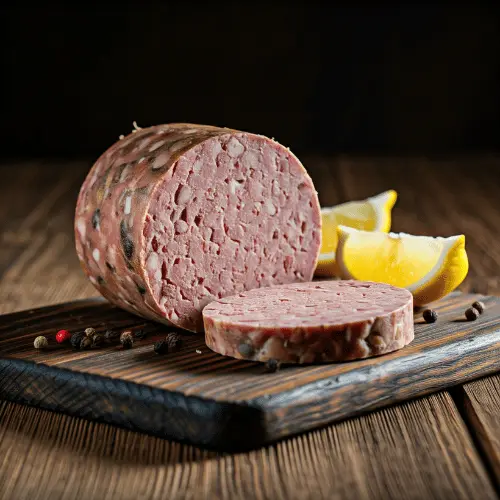

Head Cheese Terminology
Headcheese has many names around the world. In North America, it’s called “head cheese.” In Scotland, it’s “potted heid.” In Britain and Australia, it’s “brawn.” Other names include “Presswurst,” “Sulz,” and “Schwartamaga” in Austria, and “pacha” in Bulgaria.
In Croatia, it’s “hladetina” and “tlačenka.” In Cyprus, it’s “zalatina.” In the Czech Republic, it’s “huspenina” and “tlačenka.” In Scandinavia, it’s “sylte,” “rullepølse,” and “rullsylta.” In Estonia, it’s “sült.”
In France and Belgium, it’s “fromage de tête,” “tête pressée,” and “pâté de tête.” In Germany, it’s “Sülze,” “Schwartenmagen,” and “Presskopf.” In Hungary, it’s “disznósajt” and “disznófősajt.” In Iceland, it’s “sviðasulta.”
In Italy, it’s “testa in cassetta,” “coppa di testa,” and “formaggio di testa.” In Latvia, it’s “galerts.” In Lithuania, it’s “košeliena” and “šaltiena.” In Luxembourg, it’s “jelli.”
In the Netherlands and Belgium, it’s “zult,” “hoofdkaas,” “kop,” and “kopvlees.”
These names show how much people love head cheese. It’s a special dish that has been enjoyed for generations. Whether it’s “brawn,” “potted heid,” or another name, head cheese is a favorite.
| Region | Local Name |
|---|---|
| North America | Head cheese |
| Scotland | Potted heid |
| Britain and Australia | Brawn |
| Austria | Presswurst, Sulz, Schwartamaga |
| Bulgaria | Pacha |
| Croatia | Hladetina, Tlačenka |
| Cyprus | Zalatina |
| Czech Republic | Huspenina, Tlačenka |
| Scandinavia | Sylte, Rullepølse, Rullsylta |
| Estonia | Sült |
| France and Belgium | Fromage de tête, Tête pressée, Pâté de tête |
| Germany | Sülze, Schwartenmagen, Presskopf |
| Hungary | Disznósajt, Disznófősajt |
| Iceland | Sviðasulta |
| Italy | Testa in cassetta, Coppa di testa, Formaggio di testa |
| Latvia | Galerts |
| Lithuania | Košeliena, Šaltiena |
| Luxembourg | Jelli |
| Netherlands and Belgium | Zult, Hoofdkaas, Kop, Kopvlees |
Head cheese has many names worldwide. This shows its rich cultural heritage and culinary traditions. From “potted heid” in Scotland to “formaggio di testa” in Italy, these names highlight its enduring popularity.
Serving and Enjoying Head Cheese
Head cheese is a tasty meat dish that can be served in many ways. You can slice it and put it on crackers or toast, like a pâté. This way, you can really enjoy its rich, gelatinous texture and deep flavors.
For a more filling option, head cheese is great in sandwiches. Add some pickles and mustard for extra taste. In the South, some people even eat it like cheese or over grits.
Traditional Accompaniments
Choosing the right sides for head cheese is key. Creole mustard is a classic choice, with its sharp flavor and grainy texture. It pairs well with the savory meat. Pickled vegetables, like onions and cucumbers, also add a nice contrast to the richness of the head cheese.
| Accompaniment | Flavor Profile | Purpose |
|---|---|---|
| Crackers | Crisp, neutral | Provides a base for the head cheese |
| Toast | Crunchy, toasted | Serves as a platform for the head cheese |
| Pickles | Tart, acidic | Balances the richness of the head cheese |
| Creole Mustard | Spicy, grainy | Complements the savory flavors of the head cheese |
| Grits | Creamy, mild | Provides a neutral base for the head cheese |

Trying out these traditional sides can help you find new ways to enjoy head cheese. Whether you slice it, cube it, or use it in sandwiches, it’s a true culinary gem.
The Enduring Legacy of Head Cheese
Head cheese, a savory meat delicacy, has a long history dating back to the Middle Ages in Europe. It was a way for peasants and serfs to use less desirable meat scraps. They created a gelatinous terrine-like dish that was both nourishing and delicious.
Head cheese was once common in deli counters and butcher shops, especially in the American South. But now, it’s at risk of becoming an endangered food. Yet, a glimmer of hope remains as artisanal meat purveyors in Louisiana work to keep this head cheese tradition alive.
These passionate artisans are not only preserving the head cheese legacy. They’re also experimenting with new flavors and presentations. By showcasing head cheese’s versatility and culinary value, they ensure it remains a part of the region’s rich gastronomic heritage.
“Head cheese is a true testament to the resourcefulness and ingenuity of our ancestors. It’s a delicacy that deserves to be celebrated and shared with future generations.”
The efforts of these artisanal producers are a beacon of hope. They remind us that the enduring legacy of head cheese is worth preserving. Through their dedication and innovation, this unique meat delicacy may find its way back into the hearts and plates of a new generation of food enthusiasts.
Head Cheese: A Delicacy of Resourcefulness
Historical Significance
Head cheese is a tasty meat dish that came from necessity. In the Middle Ages, peasants and serfs used leftover meat scraps. This led to the creation of head cheese, showing their cleverness and strength.
In the American South, head cheese was also a tradition. Enslaved people and their families made a beloved dish from offal and pig scraps. This shows the importance of head cheese, as it reflects the struggles and creativity of marginalized groups. Even famous poet Maya Angelou loved head cheese. She had a friend buy lots of pork scraps for her to make it, showing its lasting appeal.
Head cheese’s roots as a peasant food and its lasting place in Southern cuisine highlight its importance. It shows how people facing hard times turned simple ingredients into a delicious and satisfying dish. Today, we still enjoy this flavorful dish.
The Texture and Appearance of Head Cheese
Head cheese is a unique dish that looks like a savory meat terrine or jelly. Its texture comes from boiling, which pulls out collagen from animal parts. This collagen turns into a jelly-like substance when it cools, making head cheese quiver and shine.
To make it even more jelly-like, gelatin or aspic is added. This makes the meat block firmer and more cohesive. The mixture is then pressed into a mold, showing off the meat pieces like the pig’s nose or tongue.
Making head cheese is all about balance and detail. From brining and cooking to reducing the liquid, every step is crucial. It’s what makes head cheese so special in texture and look.
| Characteristic | Description |
|---|---|
| Head Cheese Texture | Firm, jelly-like, and quivering, with visible pieces of meat suspended in the gelatin |
| Head Cheese Appearance | A glistening, terrine-like block, often revealing the nose, tongue, or other distinctive meat cuts |
| Head Cheese Jelly | A natural gelatin formed from the collagen extracted during the boiling process, sometimes enhanced with additional gelatin or aspic |
| Head Cheese Terrine | The distinct, molded shape that head cheese takes on, showcasing the meat pieces within the gelatin |
| Head Cheese Mold | The container used to shape and set the head cheese, giving it its characteristic form |
The texture and look of head cheese show the skill of its creators. They turn simple animal parts into a dish that excites the senses.
Head Cheese: An Acquired Taste?
For some, the idea of head cheese is unappealing. Its visible animal parts in a savory gelatin make it an acquired taste. Many struggle to get past their initial aversion to head cheese.
But fans of head cheese love its unique texture and flavor. They say it’s like a pâté or terrine. Its long history and tradition also attract adventurous eaters. As one person noted, “It’s like eating Jell-O with meat in it – not for the faint of heart!”
“It’s like eating Jell-O with meat in it – not for the faint of heart!”
The perception of head cheese varies widely. Some see its rustic charm, while others can’t get past its look and feel. The saying “One person’s delicacy is another’s disposal” fits well here.
In the end, head cheese is a dish that divides people. It has a dedicated fan base and a larger group of detractors. Whether it’s a taste worth acquiring or too much to handle, head cheese keeps sparking debates and strong feelings.
Conclusion
Head cheese is a savory meat dish with a long history and cultural importance, especially in Europe and the American South. It may not appeal to everyone at first, but those who like it enjoy its unique taste and texture. Despite its decline, artisanal producers are keeping the tradition alive by trying new flavors and ways to present it.
Head cheese shows how people have been creative with food for centuries. Even though only 8% of Minnesotans have tried it, a 2014 survey found, there’s still a chance to introduce it to more people. With Americans eating an average of 222 pounds of red meat per year, head cheese could see a comeback.
Whether you’ve always loved head cheese or are trying it for the first time, it’s a dish that fascinates and inspires. It offers tender meat and a rich stock, showing the value of using every part of an animal. As head cheese continues to be enjoyed, its future looks bright, offering a flavorful trip through culinary history.
FAQ
What is head cheese?
Head cheese, also known as brawn, is a meat jelly or terrine. It’s made from the head of a calf or pig, set in aspic. It’s eaten cold or at room temperature, often in a sandwich.
What are the main ingredients in head cheese?
Head cheese is made from pig scraps like tongue, snout, cheek, ears, heart, and feet. These parts are boiled. This releases their natural collagens, forming a jelly-like texture when cooled.
Where did head cheese originate?
Head cheese comes from Europe, possibly ancient Romania. It’s been made since the Middle Ages to use up less desirable meat scraps.
Why is it called “head cheese”?
The name “head cheese” comes from the Dutch “hoofdkaas,” meaning “head cheese.” It reflects the dish’s origins and composition, despite not having dairy.
How is head cheese traditionally prepared?
It’s made by boiling the meat, mixing it with gelatin, and pressing it into a mold to set.
Where can you find variations of head cheese around the world?
You can find head cheese or its variations in many countries. This includes Europe, like Austria, Bulgaria, Croatia, and more.
What are some of the regional names for head cheese?
It’s known by many names worldwide. Some include “brawn,” “potted heid,” “Presswurst,” and “Schwartamaga.” It’s also called “pacha,” “hladetina,” and “tlačenka.”
How is head cheese typically served and enjoyed?
It’s sliced and served on crackers or toast, like a pâté. It’s also used in sandwiches with pickles and mustard. In the South, it’s cubed and eaten like cheese, or over grits.
What is the historical significance of head cheese?
Head cheese was a way for peasants in Europe to use less desirable meat. In the American South, it was made by enslaved people and their descendants. It shows the historical importance of this dish.
What is the unique texture and appearance of head cheese?
The boiling of the meat releases collagens that form a jelly when cooled. This jelly is enhanced with gelatin or aspic. It creates a glistening, quivering block of meat with visible animal parts.
Is head cheese an acquired taste?
Yes, some find it off-putting due to its visible animal parts in gelatin. But, those who enjoy it praise its unique texture and flavor, likening it to a pâté or terrine.
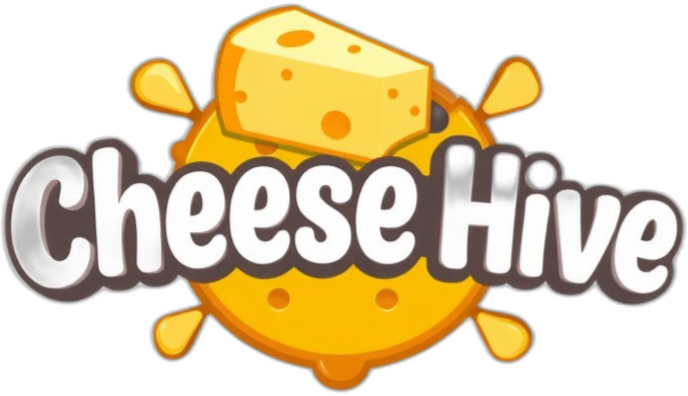

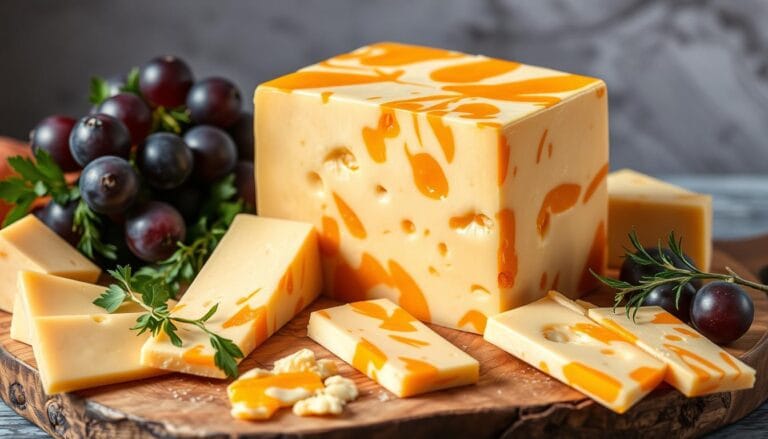
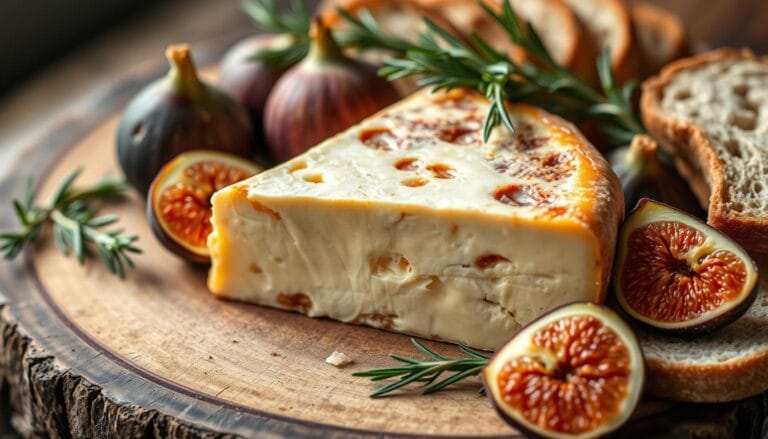
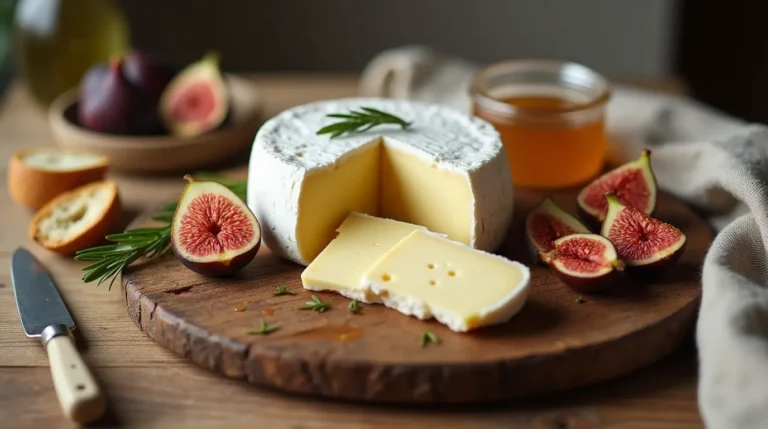
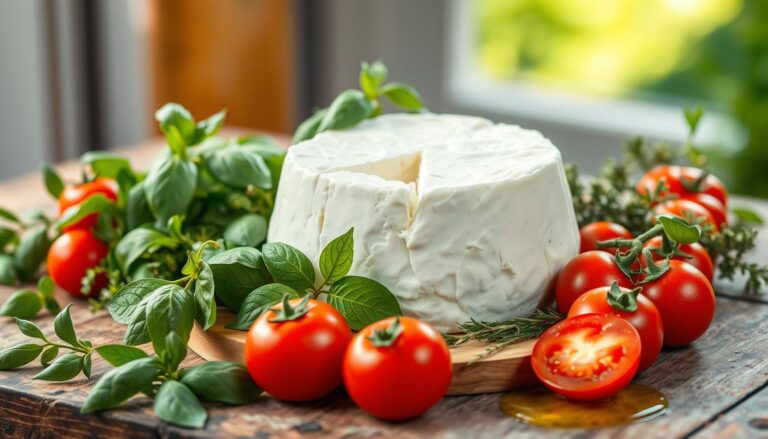
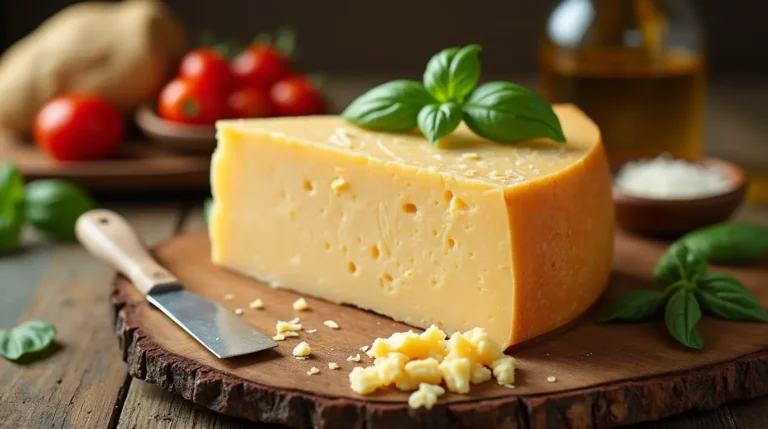
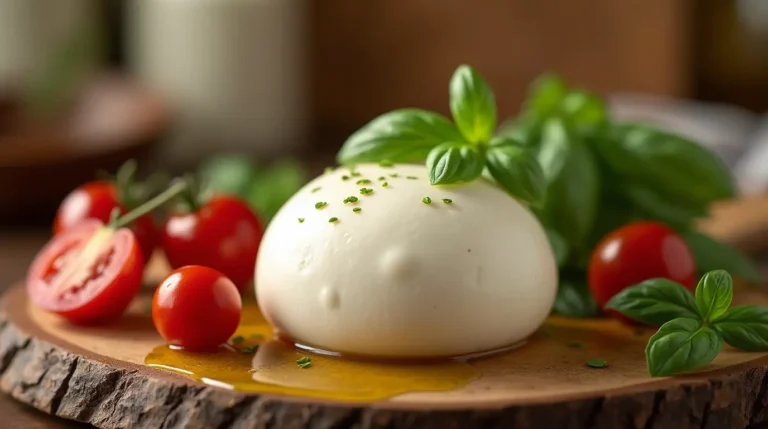
One Comment
Comments are closed.